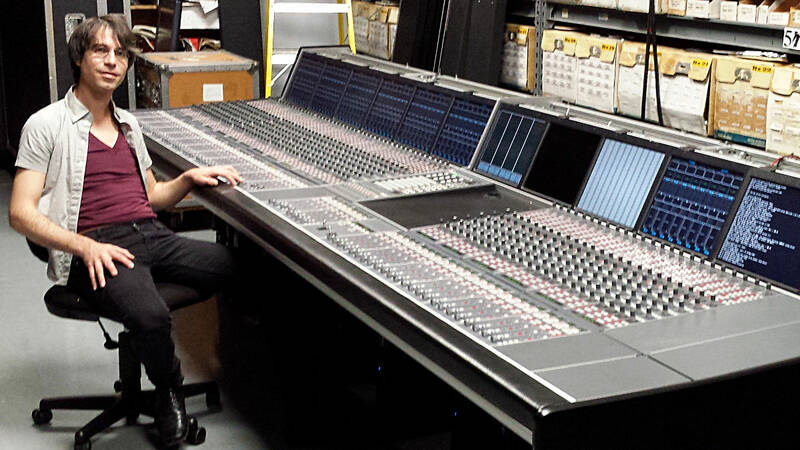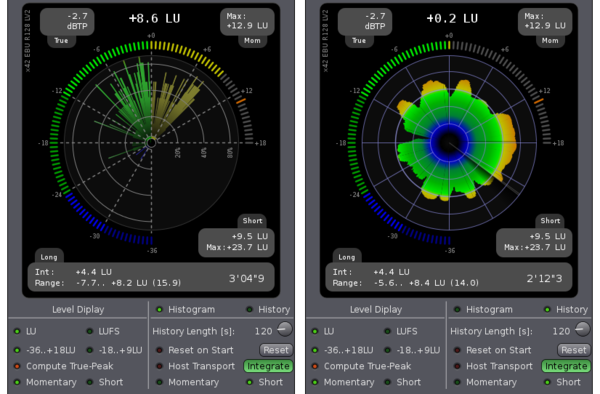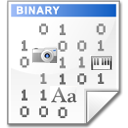I'm a miserable blogger. Even small attempts to write something short regularly once per week failed in the past.
Trying to get to the bottom of this, I realized that the issue here is blogging: I'm generally not interested to shout out my opinion one-way to the public at regular intervals. But what about other areas of communications? For example programming language code?
Another aspect that I noticed to distract me are lack of constraints: Focus on a topic is beneficial to weave a chain. …and the key ingredient for me is a good challenge to motivate me.
Recognizing one's shortcomings is the first step, playing to one's strength.. et voila.
I set out a year ago today (after the skiing holidays), and the rest is [in the] git history :)

I killed two birds with one stone: combine my interest as user and developer in the Linux Audio ecosystem in general and responsibilities I shouldered there, with the endeavor to set a good example on the following statement:
If every Linux Audio developer would make regular contributions to the GNU/Linux Audio ecosystem, the overall state would increase rapidly.
The idea came up in the wake of one of the most active thread on the linux-audio-dev and -users mailing lists 2/Feb/2013 "So what do you think sucks about Linux Audio?". Well, instead of bitching about, I opted to provide a different response, “A patch a day keeps bit-rot away” :)
The contributions made over the last year are spread out about half/half to projects of my own and to projects with a different lead-developer or maintainer.
As for the former, I've been most active in meters.lv2, the goal being to make GNU/Linux even more suitable as a platform for Pro-Audio work. Regarding the latter I became a major contributor to the flag-ship of Linux Audio: The Ardour3 Digital Audio Workstation. On the sidelines there were (and are) many more projects, not all of them on github.
I'm not personally interested in data-mining and analyzing the commit-log for patterns. The general Mantra of it all is “Find something that you're interested in, can do, and do it”. The only problem here is that
eventually there's much more to do that there is time for doing it. Luckily there is some overlap with many projects as well as with my personal and professional use-cases which makes it easier to set priorities, even
though not necessarily favorable ones from the 'fun' point of view.
Another related issue is that collaboration requires communication with other authors, which can prevent a regular code-contribution pattern. While this is a good thing in general (plan, think and discuss first), it did not aid the challenge at hand… In fact, this “Don't break the chain” coding endeavor required a bit of time-planning in itself to be useful.
The hard part to keep this up was after around 3 month (late spring) and then again later in August/September (summer holidays). Here, I motivated myself with a small side project there: I can now say “I wrote git …on github” :)
Eventually a git commit became daily routine, just like reading mail. A git commit can be anything from a simple one line typo fix to a major rework of a piece of code so the measure of actual contributions is somewhat meaningless, but as the Scottish say: “Many a mickle makes a muckle.”
GitHub rightfully counts bug-reports as contribution to a project, though in my case the goal was a daily contribution to the master branch of some project (not counting fun projects such as the git-message).
Anyway, it's been a rewarding experience and I'm planning to keep this going, maybe not as rigorously as during the last year, since other (non code) projects are about to become more central in the not too distant future. Either way I gave up for good on trying to repeat a feat that I managed from age 15 to 25: Play at least 1 hour guitar every day.



















